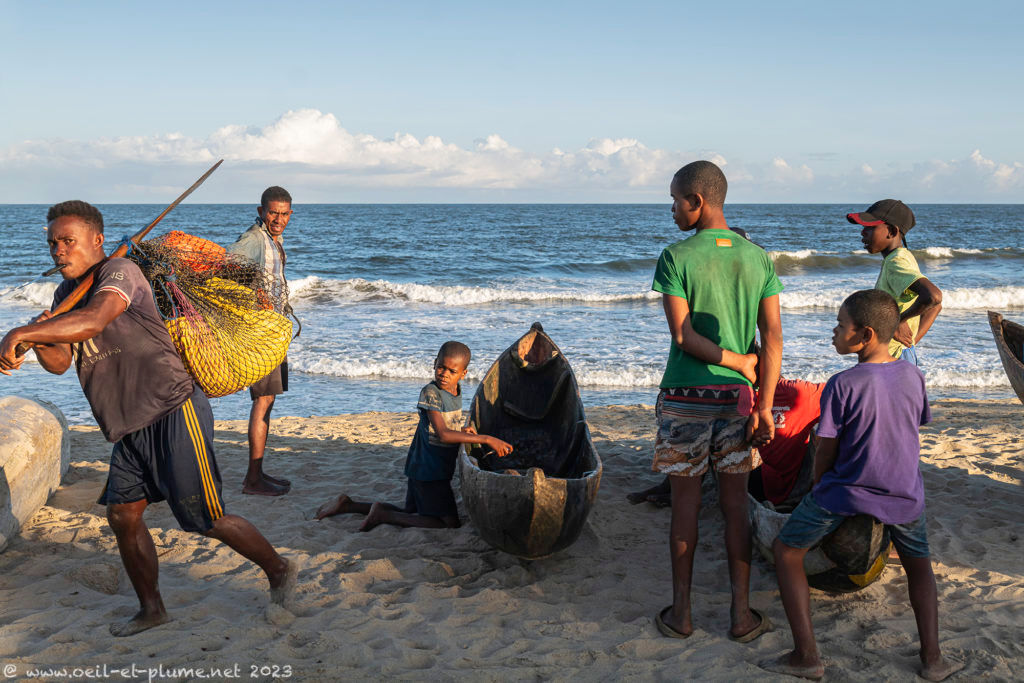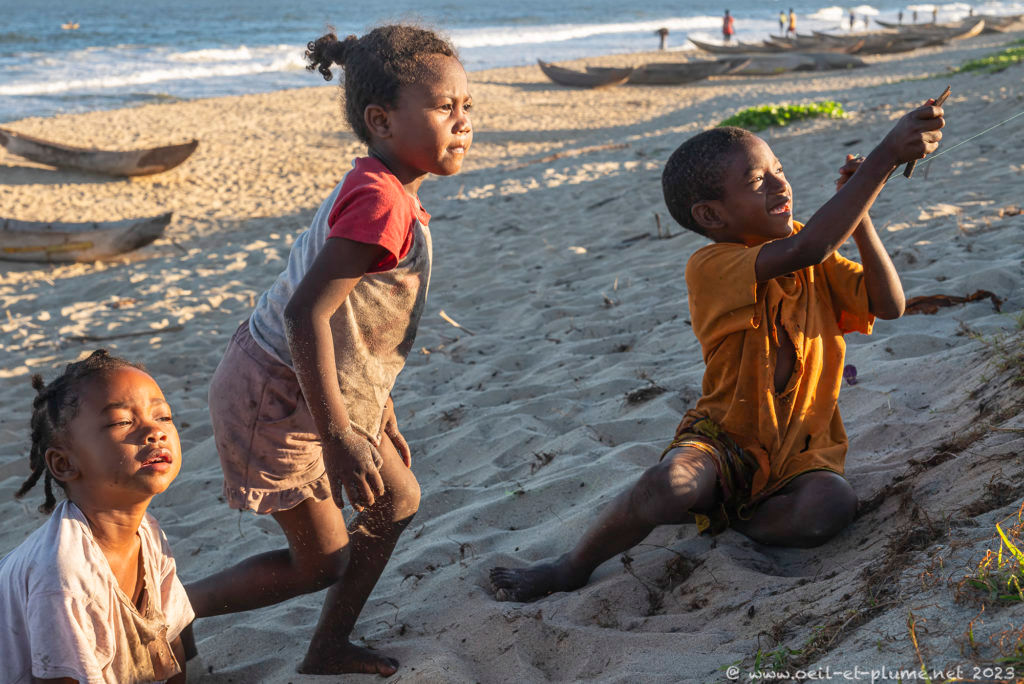Continuing from here.
Luxuriant vegetation
The abundant water in the Canal des Panganales translates logically into luxuriant vegetation covering most of the surrounding lands. Even if the primary forests have long gone, the Canal region still displays a solid tropical exuberance, be it within mangroves ecosystems or on forested land. Without surprise, green is the main colour, declined in countless shape, colour and luminosity variations.
Wildlife
Once infested with crocodiles, the region is now hosting only a few crocodiles living in remote swampy areas. The baby one hereafter was captured and lives in captivity. It will be released one day once old enough to survive in the wildness.
Although Madagascar does not host any venomous snake, it counts many and large species. The boa herewith is already over 2-meter long and grows fast. It will also be released once attained its adult age.
It is hard to believe that the Nepenthes madagascariensis is carnivorous. The shape and colours of the cute plant are alluring enough to attract insects to land on its rounded deck. The cover bends easily and quickly so that the preys fall into the conic body where they die and are digested eventually by the plant.
Madagascar is famous for hosting a large variety of lemurs. Many of those species are not endemic as they were introduced in the archipelago in the 19th or 20th centuries. Some lemur species are active at nights, others during the day. Lemurs in wildness are quite difficult to approach. The specimen hereafter were met in a semi-wild environment.
The indri indri is considered to be the largest of the surviving lemur species. It is endemic and living only in specific areas in eastern Madagascar.
The indri indri is famous for its powerful chants which are used to communicate within and between lemur groups. I was lucky enough to assist to one of chanting sessions.
The Indri indri is also very fond of lichees, which provided me with a wonderful window of photographic opportunity.
The indri indri is part of many myths and legends in Madagascar that once helped protecting against human activity. Since 2012, the indri indri is classified as an endangered specie.
Indian Ocean
The wildest natural element in the Panganales region is not animal or vegetal; it is simply the Indian Ocean. Unlike most of Sainte-Marie Island, it entails no coral reef protecting the main island’ shore against strong waves. The strength of its marine current is such that sailing on pirogues is risky while swimming along the beach is out of question.
Despite of this, fishing on wooden pirogues constitutes the main and the most lucrative income-generating activity. “Fishing is the Ocean the only valuable job option for us”, states this young guy. “The soil here is too sandy for agriculture while there is no commercial or tourism revenue available. I went fishing into the Ocean waters this early morning already. Although it is rather late in the morning, I need to return there to catch more fish.”
Getting across the Ocean waves bordering the shore is not an easy endeavour, even for experienced fishermen. Before leaving the beach, the young guy sits in the pirogue for a while, concentrates and prays silently before running into the turbulent water:
It took the fisherman three attempts and about 15 minutes to cross successfully the big waves bordering the shore. Twice, he and his pirogue were pushed back by the Ocean.
In the late afternoon, a number of fishermen reach the shore, exhausted by their heavy duty work performed under an implacable tropical sun. Their wooden pirogues suffer also much from surfing daily the saline water of the Indian Ocean. I wonder how some of them are still good for the job despite multiple repairs with plastic pieces and tar.
The Indian Ocean beach offers attractive entertainment opportunities to local children. Kite flying bank on always strong winds blowing from the Ocean inland. I am amazed by the creativity and the astuteness of those children to build kites out of rubbish plastic and light wood pieces, connected with string. The least skilled or lucky ones are bound to climb trees to recover their kites.
Back to urban life
As my week in the Canal des Panganales draws to an end, it is time to reach out Brickaville, where I will catch a taxi-brousse (collective transportation) minibus back to Tamatave. On the way, our taxi-brousse pirogue stops many times to get or disembark passengers. Most of them head to Brickaville market to sell their products and get some supplies. Trade transactions sometimes start already in the pirogue amongst passengers.
The history of the Canal des Panganales illustrates the ongoing tension between Nature and human activity. Pharaonic infrastructural projects such as the Canal des Panganales are challenging not only to build but also to maintain in a developing country. Over time, natural elements, alongside financial constraints and shifting development policies tend to downsize human ambitions to a sub-optimal but more sustainable scale.
Cheers,













































